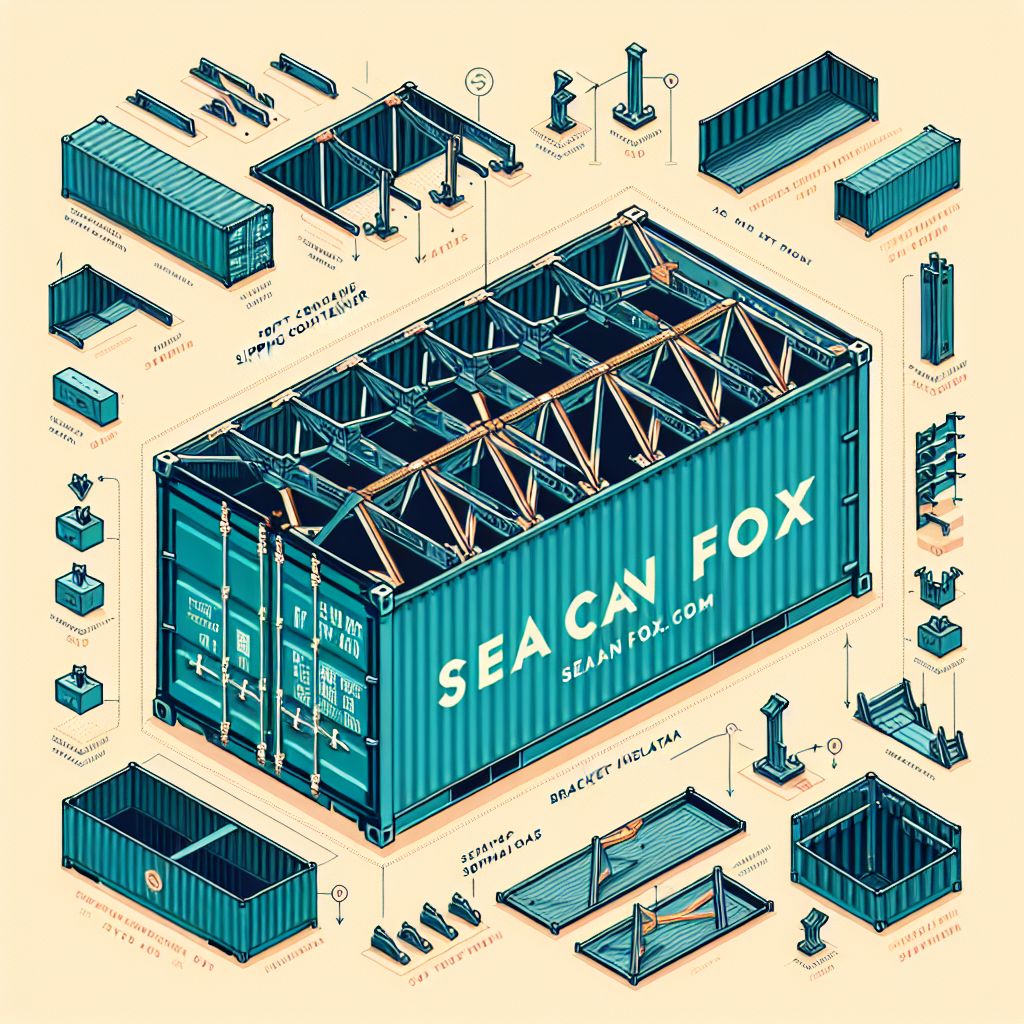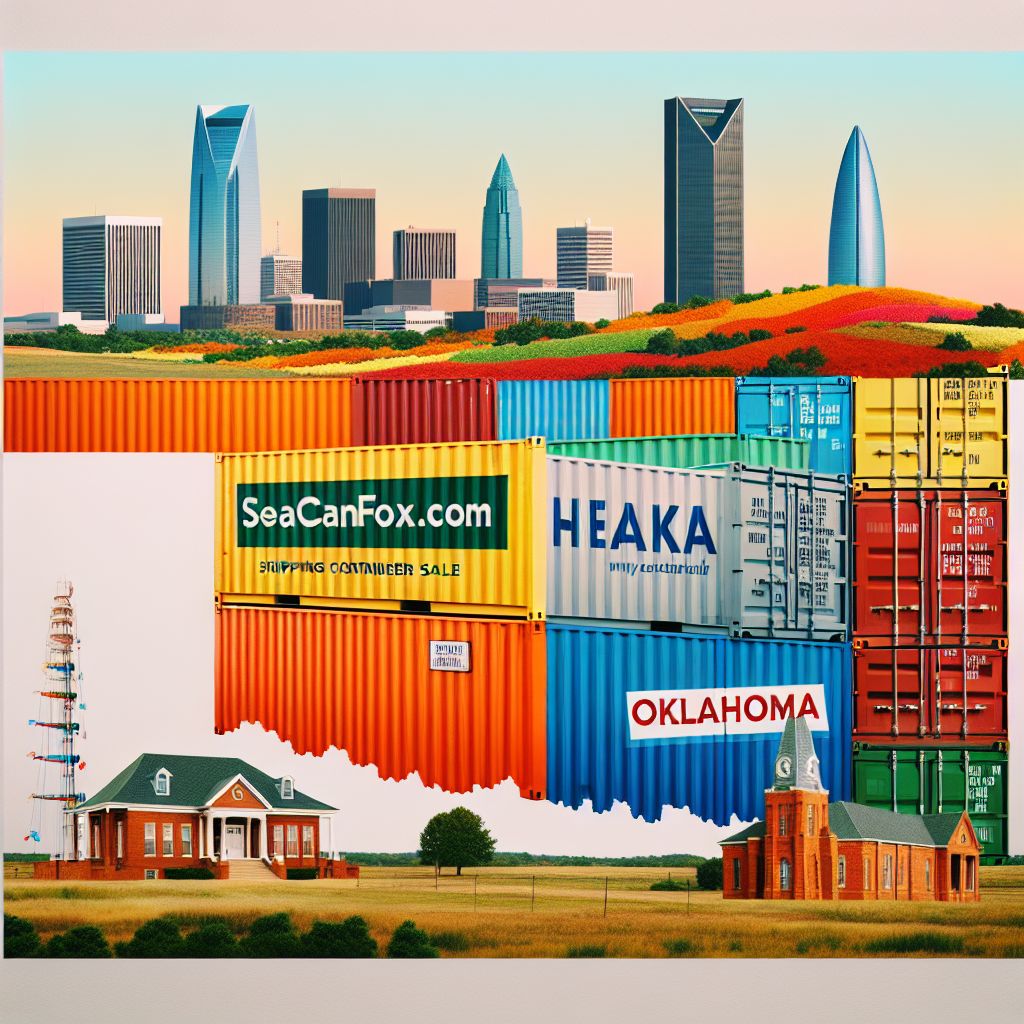Key Takeaways
- Prices for containers in Oklahoma vary depending on size, condition etc, but roughly from $2,000 to $5,000 for used units.
- 20ft containers are ideal for small-scale storage or modifications, typically measuring 20′ in length, 8′ in width, and 8’6″ in height.
- 40ft containers offer double the storage capacity of 20ft units and are suitable for large-scale storage or commercial use, with standard dimensions of 40’x8’x8’6″.
- High Cube containers provide additional height, useful for bulky items, featuring dimensions of 40’x8’x9’6″.
- Delivery options are often available, but it’s essential to have the necessary space and equipment for offloading and setup.
Pros and Cons of New vs. Used Containers
When looking to buy a shipping container in
How to Select the Perfect Container Size for Your Project
Size matters, especially when it comes to shipping containers. Think about what you’re storing or the space you need for a conversion project. For a backyard shed or a small office, a 20ft container could be just right. But if you’re aiming to build a home, workshop, or need ample storage for business inventory, consider a 40ft or a High Cube for that extra vertical space.
My Favorite Container Homes Resource
I compared the top 3 Container Home Guides
to discover the ultimate resource!
See my top recommendation here
Understanding Oklahoma’s Container Market
Oklahoma’s market for shipping containers is as diverse as the state itself. With industries ranging from agriculture to oil, the demand for these versatile units is high. Both rural and urban areas use containers for storage, offices, and even homes. Because of this broad use, it’s essential to understand what’s available and what you’re looking for before making a purchase.
Top Suppliers in the Sooner State
Quality suppliers are key to finding the best shipping container for your needs. In Oklahoma, companies like Twisted S Containers and Oklahoma Container offering a wide range of sizes and conditions. They provide valuable services like delivery and customization, which can simplify your container acquisition process.
Price Trends for Shipping Containers in Oklahoma
Prices for shipping containers in Oklahoma have been affected by global trade fluctuations and local demand. However, you can typically find used 20ft containers for between $2,000 and $3,500, while used 40ft containers may range from $3,500 to $5,000. New containers will cost more, but they’re an investment in longevity.
Selecting a Shipping Container
Before you buy, have a clear idea of what you need. Think about size, condition, and any modifications you might want. And always inspect the container in person or ask for detailed photos to ensure it meets your standards. Remember, the cheapest option isn’t always the best value in the long run.
Navigating Size and Type: From Standard to High Cube
Choosing the right type of container is critical. Standard containers are the go-to for most needs, but High Cube containers offer an extra foot in height, making them perfect for taller items or when
Let’s say you’re planning to convert a container into a mobile cafe. A High Cube gives you that extra headroom for light fixtures and ventilation systems, making for a more comfortable space for your customers and staff. It’s an example of how choosing the right type can make all the difference in the functionality and feel of your project.
The Importance of Inspecting Containers Before Purchase
Inspection is non-negotiable. Whether you’re buying new or used, you need to ensure the container is structurally sound. Look for signs of rust, especially at the seams and corners, check the doors operate smoothly, and confirm that the wooden floor inside is intact and not rotting. If possible, visit the container in person or request a video tour to get a comprehensive look.
Remember, minor cosmetic issues can be fixed, but structural problems can turn your purchase into a money pit. It’s not just about aesthetics; it’s about the safety and longevity of your investment. So, take the time to inspect, or hire a professional to do it for you. It’s worth the extra effort or expense to ensure you get a container that meets your needs.
For instance, if you discover a small dent on the exterior that doesn’t affect the structure, it might not be a concern. However, if you find extensive rust that has penetrated the steel, compromising the container’s integrity, you should consider looking for another unit or negotiating a lower price.

Size and Specification Guide
When it comes to shipping containers, the devil is in the details. The size and specifications of your container will dictate what you can do with it. Standard 20ft and 40ft containers are the most common, but there are also High Cube, open-side, and custom-sized containers available for specific needs. Knowing the exact dimensions and capacity of each type helps in planning your space effectively.
20ft Containers: Compact and Convenient
20ft containers are the bread and butter of the container world. They’re large enough for a variety of uses but small enough to fit in a driveway. With a standard height of 8’6″ and a width of 8′, these containers offer about 160 square feet of space. They’re ideal for small businesses, extra home storage, or as the building blocks for modular construction.
For example, a local Oklahoma farmer might use a 20ft container to store equipment and protect it from the state’s unpredictable weather. Its compact size makes it easy to place on a property without requiring extensive site preparation or permits in many cases.
40ft Containers: Spacious and Sturdy
Double the length of their 20ft counterparts, 40ft containers offer a substantial amount of space, making them suitable for larger storage needs or more ambitious modification projects. With the same width and height as 20ft containers, you get around 320 square feet of floor space. This makes them an excellent choice for commercial storage, larger workshops, or spacious homes.
Custom Containers: Tailored to Your Needs
Custom containers are a game-changer for specific projects. Whether you need a container with side doors for easy access, want to combine multiple containers for a larger space, or require cut-outs for windows and doors, customization is available. These tailored solutions, however, come at a higher cost and often require professional assistance to ensure structural integrity and safety.
An Oklahoma-based entrepreneur, for example, might opt for a custom container with side openings to serve as a pop-up retail space, providing a unique shopping experience and drawing in customers.
Whatever your vision, there’s a container solution out there. It’s all about matching your needs with the right size and features.
Purchasing and Delivery Process
Buying a shipping container in Oklahoma is straightforward if you follow the right steps. Start by determining your budget and the container’s intended use. Then, research and compare local suppliers, considering their reputation, prices, and the services they offer, such as delivery and customization.
Steps to Secure Your Shipping Container in Oklahoma
Once you’ve found a supplier and selected your container, it’s time to make the purchase. Most suppliers will require payment before delivery, which can usually be done by credit card, bank transfer, or check. Ensure you receive a bill of sale and any warranty information if applicable.
When it comes to delivery, you’ll need to prepare your site. Ensure there’s enough space for the container and clear access for the delivery truck. Depending on the size and weight of the container, you may also need equipment on-site to offload it.
- Check local zoning laws to ensure containers are permitted on your property.
- Have a solid, level foundation ready for the container to sit on.
- Ensure there’s at least double the length of the container in clear space for the delivery truck to maneuver.
- Coordinate with the supplier on the delivery date and time.
- Inspect the container upon arrival to ensure it matches what you purchased.
Delivery and Installation: What to Expect
After securing your shipping container, the next step is delivery and installation. Most suppliers in Oklahoma offer delivery services, but it’s essential to discuss the details before the container arrives. A common delivery method is a tilt-bed truck, which requires ample space for the truck to maneuver and a clear area for the container to slide off the back.
Installation is typically straightforward, but it’s crucial to have your site prepared. This means a level, firm surface—like gravel or concrete—ready for the container to rest on. If the ground is uneven, the doors may not align properly, which can compromise the security and functionality of the container. Don’t overlook this step; a little prep work goes a long way in avoiding headaches down the line.
Oklahoma Shipping Container Sales Summary:
References:
https://tscok.com/inventory/
https://okcontainer.com/buy-oklahoma-container/

Frequently Asked Questions (FAQ)
Impact of Size and Condition on Pricing
The size and condition of a shipping container are the main factors that influence its price. Generally, the larger the container, the higher the cost. A new 20ft container can range from $3,000 to $4,000, while a 40ft container might be between $4,500 and $6,000. Used containers are less expensive, but prices can vary widely based on condition and age. It’s always a good idea to compare prices from different suppliers to ensure you’re getting a fair deal.
Customization Capabilities and Costs
Customizing a shipping container can transform it into almost anything, from a cozy home to a mobile office. The cost of customization depends on the complexity of the work. Simple modifications like adding a window or a door can cost a few hundred dollars, while more extensive renovations, such as full insulation and interior finishing, can run into the thousands. When budgeting for customization, always factor in the cost of materials and labor, and remember that some modifications may require professional expertise to maintain the container’s structural integrity.
For example, converting a container into a tiny home with full amenities can cost upwards of $20,000, depending on the design and finishes. This includes framing, insulation, electrical work, plumbing, and interior finishes. It’s a significant investment, but with the right planning, it can be a cost-effective alternative to traditional construction.
Financing Options for Container Purchases
Financing can make a shipping container purchase more accessible. Some suppliers offer rent-to-own programs, allowing you to pay for the container over time. Another option is to seek a personal loan or a small business loan if the container is for commercial use. Be sure to shop around for the best interest rates and terms, and read the fine print to understand all the associated fees and repayment expectations.
Expected Delivery Timelines for Containers
Delivery timelines can vary based on the supplier’s stock and your location. In Oklahoma, you can typically expect delivery within a week or two after purchase, assuming the container is in stock. If you’re ordering a custom container or modifications, the timeline may extend to several weeks or even months. Clear communication with your supplier is key to managing expectations and planning accordingly.
Inspection Tips for Used Containers
When buying a used container, inspect it thoroughly to ensure it meets your standards. Look for:
- Signs of rust, especially around the doors, roof, and seams.
- Dents and damage that could affect the structural integrity.
- The condition of the wooden floor inside the container.
- Functionality of the doors and locking mechanisms.
- Any signs of previous repairs, which could indicate past issues.
Don’t be afraid to ask the seller questions about the container’s history and previous use. It’s better to have a full understanding of what you’re buying to avoid any surprises down the road.







Leave a Reply